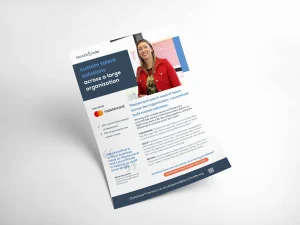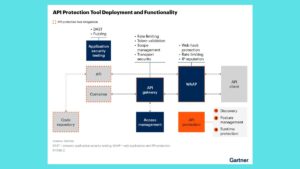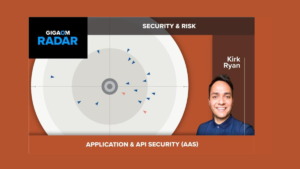Talent Acquisition Platform: Transforming the Hiring Process

In an increasingly competitive job market, organizations must employ innovative strategies to attract and retain top talent. Traditional hiring methods can be inefficient and time-consuming, leading to missed opportunities and increased costs. Enter the Talent Acquisition Platform (TAP)—a comprehensive solution designed to streamline the recruitment process, enhance candidate experience, and ultimately improve hiring outcomes.
In this blog, we will explore the key features of a talent acquisition platform, its benefits, and how organizations can leverage it to optimize their hiring strategies.
What is a Talent Acquisition Platform?
A Talent Acquisition Platform is an integrated software solution that automates and manages various stages of the recruitment process. It encompasses tools and features that facilitate candidate sourcing, applicant tracking, collaboration among hiring teams, and data analytics. By centralizing recruitment efforts, TAPs enhance efficiency and improve the overall candidate experience.
Key Features of a Talent Acquisition Platform
- Applicant Tracking System (ATS): At the core of any TAP is an applicant tracking system that allows organizations to manage the entire recruitment process from job posting to hiring. It streamlines the collection of applications, resumes, and candidate information while providing tools for sorting and filtering applicants.
- Candidate Sourcing and Job Distribution: TAPs enable organizations to source candidates from multiple channels, including job boards, social media, and internal databases. This feature often includes automated job posting capabilities to maximize visibility across various platforms.
- Candidate Relationship Management (CRM): A robust TAP allows organizations to nurture relationships with potential candidates through automated communications, personalized outreach, and engagement initiatives. This feature helps maintain a talent pipeline for future hiring needs.
- Collaboration Tools: Talent acquisition platforms facilitate collaboration among hiring teams by providing tools for sharing feedback, scheduling interviews, and managing candidate assessments. This ensures that all stakeholders are aligned and informed throughout the hiring process.
- Data Analytics and Reporting: A TAP provides valuable insights into recruitment performance through analytics and reporting features. Organizations can track key metrics such as time-to-fill, cost-per-hire, source of hire, and candidate demographics, allowing for data-driven decision-making.
- Mobile Accessibility: Many modern talent acquisition platforms offer mobile accessibility, enabling hiring managers and recruiters to manage the recruitment process on the go. This flexibility enhances responsiveness and improves the candidate experience.
- Integration with Other HR Systems: A comprehensive TAP often integrates with other human resources management systems (HRMS) and tools, such as onboarding, payroll, and performance management systems. This ensures a seamless transition for new hires and promotes a unified HR ecosystem.
Benefits of Using a Talent Acquisition Platform
1. Increased Efficiency and Productivity
By automating repetitive tasks such as resume screening, interview scheduling, and candidate communications, TAPs free up time for recruiters to focus on more strategic aspects of hiring, such as building relationships with candidates and assessing cultural fit. This increased efficiency leads to a faster and more effective recruitment process.
2. Enhanced Candidate Experience
A well-designed TAP improves the candidate experience by providing clear communication, streamlined application processes, and timely updates. Candidates appreciate a user-friendly interface and personalized interactions, which can significantly enhance their perception of the organization.
3. Improved Quality of Hire
With data analytics and assessment tools, TAPs enable organizations to identify the best candidates more effectively. By utilizing standardized evaluation criteria and conducting structured interviews, hiring teams can make informed decisions that lead to higher-quality hires.
4. Diversity and Inclusion Initiatives
Many talent acquisition platforms offer features that help organizations promote diversity and inclusion in their hiring practices. By removing bias from job descriptions, implementing blind resume screening, and tracking diversity metrics, organizations can create a more equitable hiring process.
5. Cost Savings
By streamlining the hiring process and reducing time-to-fill, TAPs can lead to significant cost savings in recruitment. Organizations can minimize reliance on external recruitment agencies and optimize their internal resources for greater ROI.
6. Data-Driven Insights
Access to real-time analytics and reporting allows organizations to evaluate the effectiveness of their recruitment strategies. By understanding what works and what doesn’t, organizations can continuously refine their hiring processes and make data-driven decisions that enhance talent acquisition outcomes.
Implementing a Talent Acquisition Platform
To successfully implement a talent acquisition platform, organizations should consider the following steps:
1. Define Your Recruitment Goals
Before selecting a TAP, organizations should clearly define their recruitment goals and objectives. Understanding the specific challenges they face in the hiring process will help guide the selection of the most suitable platform.
2. Evaluate Available Platforms
Conduct thorough research to evaluate different talent acquisition platforms. Consider factors such as features, ease of use, customer support, integration capabilities, and pricing. Request demos and trials to assess how well each platform meets your organization’s needs.
3. Involve Key Stakeholders
Engage hiring managers, recruiters, and other stakeholders in the evaluation and selection process. Their input is invaluable in choosing a platform that aligns with the organization’s hiring practices and culture.
4. Provide Training and Support
Once a platform is selected, provide training for HR teams and hiring managers to ensure they are equipped to use the system effectively. Ongoing support and resources can help maximize the platform’s benefits.
5. Monitor Performance and Gather Feedback
After implementing the TAP, continuously monitor its performance and gather feedback from users. Use data analytics to track recruitment metrics and identify areas for improvement. Regularly review the platform’s effectiveness and make adjustments as needed.
Conclusion
A Talent Acquisition Platform is an essential tool for organizations seeking to enhance their hiring processes and attract top talent. By streamlining recruitment efforts, improving candidate experience, and leveraging data-driven insights, organizations can make informed hiring decisions that align with their strategic goals.
As the talent landscape continues to evolve, investing in a robust talent acquisition platform can provide a significant competitive advantage. By embracing technology and optimizing the recruitment process, organizations can build a strong workforce that drives innovation, growth, and long-term success.






